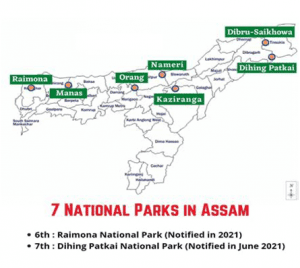THE CONTEXT: Recently the Prime Minister questioned the practice of politicians making mindless promises of ever profligate schemes in pursuit of votes, and termed it a dangerous trend.Besides the quick political gains that they seek, this also pre-empts any discussion on the existing development paradigm. This article analyses what should be the threshold of precariousness at which poll promises such as free food, job guarantees, or cash doles should kick in as a measure to provide social security.
GROWTH AND WELFARE
- The dichotomy between growth and welfare has criticisms against free trade capitalism, that it leads to monopoly capitalism and an economy dominated by the power of trusts, combines, cartels, multinationals and transnational corporations. This in turn gives rise to a variety of social, economic and political contradictions in society. In the absence of any positive interference by the state in the political economy, the exploitation of the working class by an aristocracy of monopoly capitalism without caring for any social responsibility, unemployment on a large scale, inhuman working conditions in factories, competitive low wages, Long working hours, poverty, illiteracy and poor health are bound to result.
- Also, growth under free trade capitalist economy is the enemy of socioeconomic equality. As was pointed out by Green and Tawney, by denying redistribution of national wealth through the state, the market fosters inequality and injustice. It was argued that the old mechanism of the market because they were powered by self-interest, cannot be sensitive to the welfare needs precisely because they cannot be translated into prices and also those in need lack the resources to pay the price set by the market.
POPULISM:Populism can be defined as a political identity which encapsulates the following important elements:
- Populism legitimates itself in terms of “popular sovereignty” by referring to a part of the population that supposedly represent the people as a
- Presents heterogeneous and incompatible demands “as one” demanded by the people
- Dividing the people within the population and outside on friend and enemy relations, over the demarcation of radical antagonism.
- Uniting the friends “extricated from the population” under a single leadership so that it remains undivided.
- Populism can range from persuasive politics to a dangerous agenda that creates internal and external conflict, negates climate change and rejects human rights. We carve out four root causes of populism. The dominant cause in a period or area determines the socio-economic structure of voters. Populism can have a left-wing or right-wing agenda, and it accelerates with regional problems, inequality, spatial disequilibria and migration. Populist parties often become part of democratically elected governments by forming coalitions with mainstream parties, in which they play the more active part and make further inroads until they dominate. If they finally take the lead, they clinch it by changing the rules, dismantling the division of power between government, parliament and the courts. They invent a foreign enemy or a dangerous force to cement their power.
ROOT CAUSES FOR POPULISM
ECONOMIC CAUSES
- Economic causes can be low growth, rising unemployment and inequality. The rising income inequality among individuals, but also increasingly across regions, is a driving force of today’s populism. Income and population are increasing in urban centres and modern industrial districts, while in the periphery there is low growth and low investment from international firms since they need skilled labour and supplier networks.
CULTURAL CAUSES
- Cultural causes for populist voting can be connected with changes in value systems that are described in the literature as gradual changes in Western society’s values, from conservative to liberal. The latter values range from equality of gender and acceptance of different partnerships and lifestyles to ideas about healthy nourishment, mandatory seatbelts in cars and stricter speed limits. Opposition to political correctness and gender consciousness has increased gradually and has now found a political outlet.
THE SPEED OF CHANGE
- Lifetime jobs have become the exception, and young people seldom pursue the same occupation as their elders. What one does at the start of a career cannot become a job for decades – even if the job is formally the same, its content, activities and tasks to be performed will change. Kids do not work in the same firms and jobs as their parents and are flexible in changing the location of their work. Their personal, religious and political priorities are less homogenous and can be different from those of their parents. This widens choices, increases the fit between abilities and demand and thus leads to lower levels of skill mismatch, but it also involves uncertainty and can result in intermittent periods of joblessness and retraining.
POPULISM AND THE RISE OF THE FAR RIGHT AROUND THE WORLD:
Although populism always shares these two essential claims, it can take on widely varying forms across contexts. This report identifies three types of populism, distinguished by how populist leaders frame the conflict between the ‘true people’ and outsiders:
- Cultural populism claims that the true people are the native members of the nation-state, and outsiders can include immigrants, criminals, ethnic and religious minorities, and cosmopolitan elites. Cultural populism tends to emphasise religious traditionalism, law and order, sovereignty, and painting migrants as enemies.
- Socio-economic populism claims that the true people are honest, hard-working members of the working class and outsiders can include big business, capital owners and actors perceived as propping up an international capitalist system.
- Anti-establishment populism paints the true people as hard-working victims of a state run by special interests and outsiders as political elites. Although all forms of populism rail against political elites, anti-establishment populism distinguishes itself by focusing on establishment elites as the primary enemy of the people and does not sow as many intra-society divisions.
- Watershed political events in recent years—the election of President Donald Trump in the United States (US), the Brexit vote, the electoral success of Italy’s Five Star Movement, Brazil’s sudden lurch to the right with the election of President Jair Bolsonaro, the doubling of support for populist parties across Europe—have brought the word “populism” out of the annals of academic journals and into the headlines. Yet, it is a slippery concept that is too often used pejoratively to describe politics that those in the mainstream do not like.
- The British people defied expectations by voting to leave the European Union. The hotly contested referendum was marked by the rise of populism based on the desire to regain control of immigration and reclaim national sovereignty from international institutions. The UK’s Euroskepticism also parallels the anti-immigration and anti-trade sentiment surging in the United States, both of which are driven by “individuals who feel like they have been on the losing end of globalization.”
POPULIST SCHEMES
Schemes like offering free food or cooked food at very low prices, smartphones or laptops, bicycles or sewing machines; although help in providing for the needy but also put an extra burden on the public exchequer.
Populist schemes- an immediate relief
- These measures are important and act immediate. It helps the poor and needy by making resources accessible and affordable to them.
- Competitive populism can also be a very effective way to identify the long-felt community needs. Since these are area-specific, political parties and candidates will focus on local problems, thereby making elections more issue-oriented and participatory, and our democracy more vibrant and responsive.
- They will remain the critical components of the social safety net and poverty alleviation programmes of any government.
Populist measures- not a long-term sustainable solution
- In an extremely diverse and heterogeneous society like ours, satisfying individual desires with scarce public resources is impossible. Specific forms of individual assistance will end up satisfying few, and even that only partially, while leaving the large majority dissatisfied.
- Subsidy encourages inefficiency by relying more on the subsidy money offered by the governments and do not address the real issues like increasing the incomes of the poor.
- These schemes put an extra burden on the state’s purse and generally lead to a fiscal deficit, thereby affecting the growth prospects of the state.
- These schemes act as a tool of diversion from real issues and suppress the real issues in the name of freebies.
POLL-BOUND POPULIST MEASURES:
- The public discourse has become devoid of the nuances that once used to fascinate and grip the ideological narrative. The public of today, particularly the young and the restless, have lost patience and their desire is for instant politics, like instant noodles. As such the political behaviour of the voter has undergone a change. Gone are the days when over cups of tea and charcha, election manifestos would be discussed. Gone are the days when loyalty to a party would be based on ideology, policies and performance. In the time of WhatsApp and social media, nobody wants to read those boring manifestos with big ideas anymore. Their demand is for instant benefits, for freebies. They want snappy videos of castigation, of politicians of other parties being presented in poor demeaning light. Political parties are using a variety of devices to prove themselves more trustworthy and credible than the others. Apart from devising acronyms, participating in TV debates and organising massive rallies, there is a monumental drive towards using election manifestos to ride on the wave of populism.
- Political promises often fail to weigh the realities of implementation. In 2018, the Maharashtra government announced a 16% reservation for the Maratha community in jobs and education. The previous Congress-NCP government had also approved a proposal for the same reservation quota (16%) for the same community (the Marathas) in Maharashtra, but the Bombay high court had stayed the order. Losing sight of this larger picture and misemploying legal instruments for short-term political gains puts the promise at risk and is also unconstructive in gaining the trust of the people.
- In 2014 “Dynastic politics” became a depraved term. So high was the rhetoric that a narrative was set which was emotional in its political tone and exciting in the rhetoric, thereby giving the Prime Minister his first thumping win in 2014. A narrative has been repeatedly put to use in multiple assembly elections since then. In 2019, it became only larger, encompassing the expression of the ‘general will’.
- Delhi Chief Minister ‘free electricity and employment’ and takes upon corruption to counter political opposition and presents a ‘Delhi Model’ which also helped his party for a sweeping win in the state of Punjab.
- Freebies are also often used as poll promise tool to conceal the poor performance of the incumbent government on the socio-economic parameters and provide an opportunity to alter the voter’s mindset from real issues to short-term gains.
POPULISM AND SUBSIDY CULTURE: Riding on the wave of populism the so-called ‘subsidy-culture’ is also touted to promote idleness in the masses. Let us understand the concept of subsidy:
- As more than a fifth of the population is below the official poverty line, subsidies in India are given for a variety of reasons and in a variety of sectors. Advantages of the subsidies in India include making items of daily need more affordable such as food and fuel, creating an employable pool of educated Indians who can potentially contribute to the GDP growth ( subsidised education), to provide a leg-up to certain sectors (PLI Schemes), or even to boost industrialisation in under-developed areas through tax exemptions.
- Economic gains from subsidies provided by welfare states have also remained contentious in the literature due to their inherent paradoxical consequences in promoting competition, economic growth and equitable distribution in developing economies. State largesse on farm subsidies has increasingly become a populist tool for political gains. The politics involved with subsidies have immense emotional appeal than fulfilling the objective of social and economic justice.The culture, built up over the decades, has turned subsidies into entitlements rather than time-bound measures designed to address a specific circumstance such as a natural disaster or chronic exclusion. Today, subsidies cannot be reduced for fear of unleashing a political backlash by an opposition that is perpetually on the lookout for tripping the government on populist issues.
- However, proponents of subsidies argue that they are essentially negative taxes. Such negative taxes would mean that instead of being raised from the people, they are given back to certain target groups among the population of the country. Various subsidy regimes are meant to ensure distributive justice as they are directed at various sections of society to assist them economically. In India, the main beneficiaries have been farmers, needy people and those using various forms of public services.
There is no precise, cut-and-dried answer to the question of whether subsidy is good or bad; it depends on what subsidy one is talking about. Subsidies on public transport, medical equipment, healthcare infrastructure, on loans given to secondary agri initiatives, subsidies on incentives to shift towards renewable energies and reducing pollution etc all can help the country achieve the desired socio-economic targets.
UNDESIRABLE OUTCOMES OF POPULISM
SOCIAL POLARIZATION
- The populists exploit loopholes and issues in order to polarise society. They try to divide people along religious, racial or linguistic lines to win elections through majoritarian tactics.
SOCIO-ECONOMIC ISSUES
- The societies affected by populism suffer from socio-economic issues due to joblessness or rising inequalities and unmet expectations.
LOW ECONOMIC GROWTH
- Populist Nationalism is divisive and affects the economic growth of the country. In India, populism is used for loan waivers, poverty alleviation schemes, etc. which lead to a fiscal burden.
CORRUPTION AND ABUSE
- It often results in a decline in rational debate about political issues. There is a high risk of corruption and abuse of power.
AGAINST DEMOCRACY
- Populist movements often turn against representative democracy. Populists reject pluralism. This threatens democracy and unity in diversity.
POPULISM AND JUDICIAL INDEPENDENCE:
There is a general trend among recent populist movements to implement measures that interfere with the independence and proper functioning of the judiciary. These movements frame the courts in opposition to the popular will.
Constitutional theory and political science suggest that courts in populist regimes may try to shore up their legitimacy through appeals to the popular will. If so, the populist agenda may impact the courts even without a populist government takeover, including the adoption of instrumental approaches to legal interpretation and judicial review that seek to accommodate the populist agenda.
In many countries, even with constitutionalism, the populist government tries to interfere in judicial dispensation by various methods. However, courts in India till now have been very capable of influencing public opinion on discrete substantive issues, but curative steps must be taken in the face of rising populism so that some of the impediments in its autonomy can be annihilated. A just and rule-based judiciary is a must so that ethos of constitutionalism can be a guiding light for all.
THE ANALYSIS OF THE ISSUE
Over the decades, the Indian political class have ignored the core strengths of the country while spending huge amounts on populism. Inclusive opportunities to access quality education, dedicated research to make world-class products, nationalism to erase social divides, an adequate number of people with moral and physical courage to correct the wrong, a common link language to boost domestic trade and cultural exchange still elude the country. Poverty, unemployment, malnutrition, poor quality of education, bad loans, flight of young talent, the disappearance of water bodies and fertile agricultural land are some of the offshoots of populism. Populism always aggravates poverty and unemployment. As governments provide free electricity, cooking gas, ration, household items and subsidized meals to people, it adversely affects the entrepreneurship cycle, and repayment ethics and piles up idle energy. Politicians should choose difficult paths to become popular. They can protect fertile agricultural lands and water resources and develop a transparent domestic market; they can ensure quality health, housing and education to the masses at an affordable cost so that people can earn surplus income and save money in banks.
THE WAY FORWARD:
- It is time to revise macroeconomic, taxation, industrial and commercial policies to accommodate left-outs. Social media should also be regulated and held accountable for damaging a pluralistic, fact-based and hate-free political debate, in the same way as traditional media.
- Political parties (established and emerging) should seek to propose inclusive visions and programs that deliver benefits for all citizens, not only for a part of the voters. Participatory and deliberative platforms and initiatives (citizens’ assemblies, forums) should be embedded into the decision-making processes to balance the oligarchic tendencies of electoral democracy.
- It is important to acknowledge that globalisation, technological progress and tax reductions elevate the quality of life of society as a whole, but in the short term, they deliver a direct blow to certain pockets of the population, especially in rigid labour markets, subsidies and social protection schemes for them are imperative to keep their faith alive in the democracy and can help them grow to be able to contribute towards economic growth as well as a pluralistic society.
THE CONCLUSION:
There is no doubt that division in the face of an organized populist threat is problematic. Only rational policy initiatives can solve the problems of our times.Human resource is worst hit by populism. After 75 years of Independence, India has not made the backward castes feel they are one among the equals. If the weaker sections get compulsory quality education, they could easily compete with the forward castes. Also, the aim should not be to blindly eliminate populism but to channel it towards achieving socially and economically desirable objectives. Ultimately, the state is spending money, and it is only appropriate that this expenditure generate the maximum benefit and social welfare.



 (time taken between performing an action and getting a response) and greater bandwidth are helping in advancing societies, transforming industries and enhancing day-to-day experiences.
(time taken between performing an action and getting a response) and greater bandwidth are helping in advancing societies, transforming industries and enhancing day-to-day experiences.


